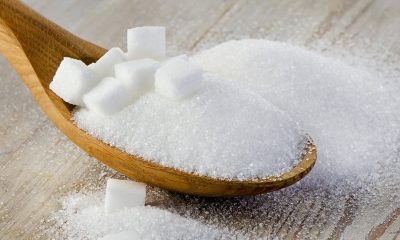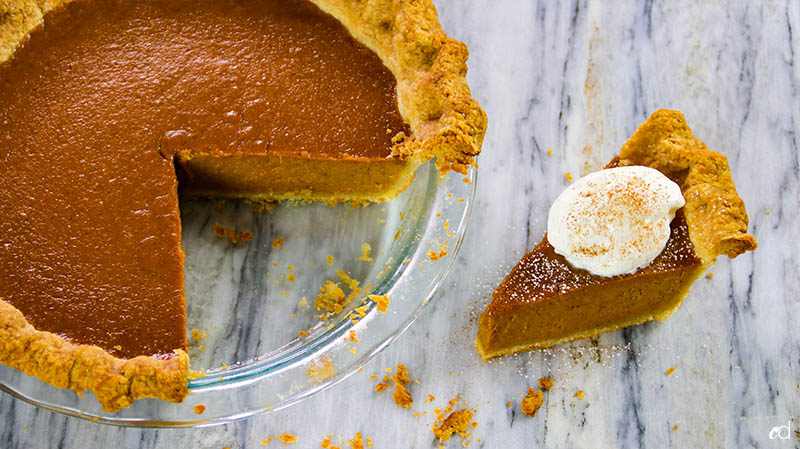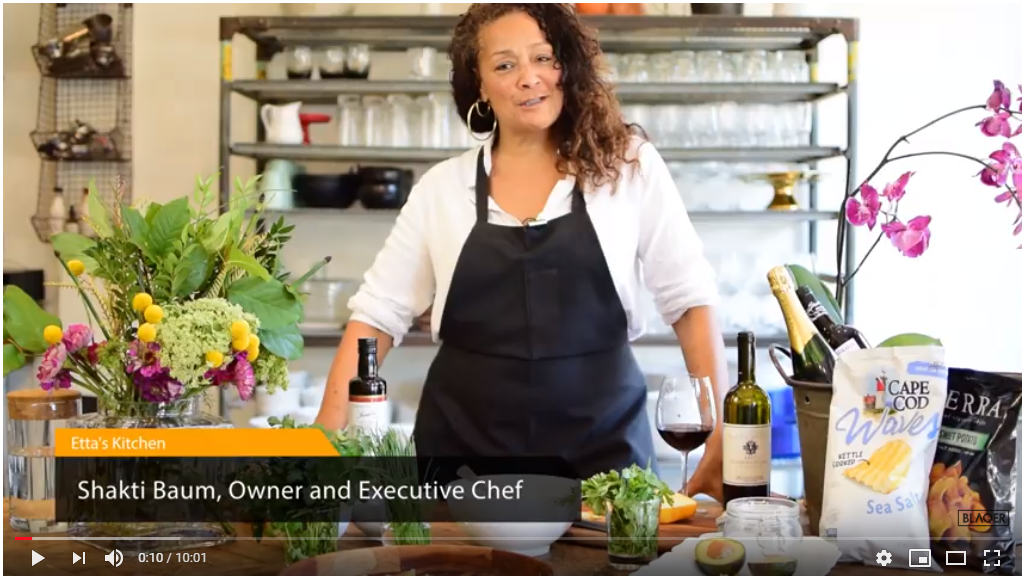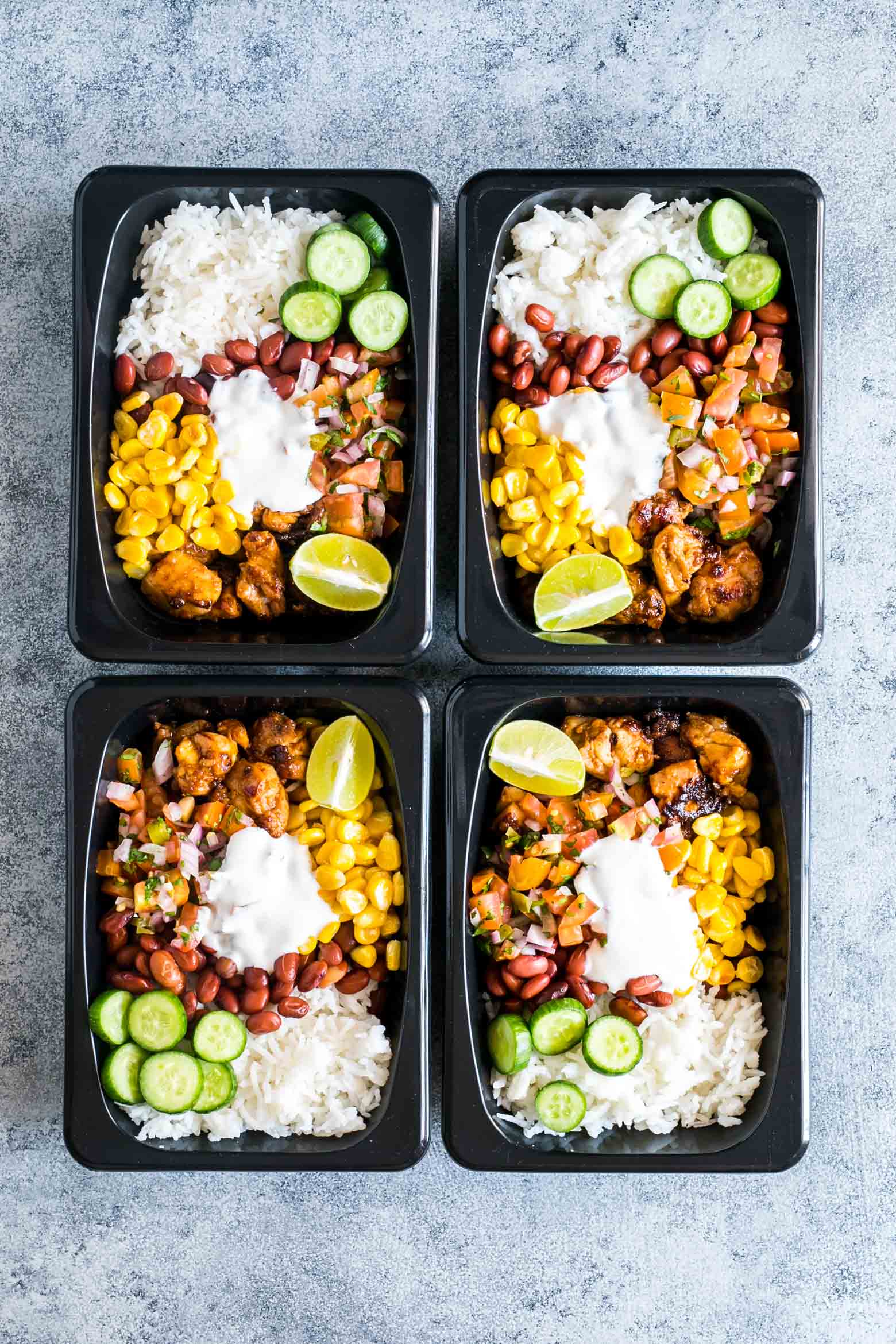Food & Drink
Margarine vs. Butter: Which is Healthier?
Published
6 years agoon
By
Jaena Mebane

A massive amount of nutrition misinformation exists on the internet.
Some of it is based on poor research or incomplete evidence, while other information may simply be outdated.
The professionals themselves may even tell you things that seem to directly contradict something you read the other day.
A good example of a subject no one seems to agree upon are the health effects of butter and margarine.
This article compares the two, looking at both sides of the debate.
What Are Butter and Margarine?
Butter is a traditional dietary staple made by churning cream.
It’s mainly used as a frying fat, spread or component of sauces, cakes and pastries.
As a concentrated source of milk fat, it’s mostly composed of saturated fat.
Because of studies associating a high intake of saturated fat with an increased risk of heart disease, public health authorities started recommending that people limit their consumption of butter in the 1970s.
Margarine is a processed food that is designed to taste and look similar to butter. It is often recommended as a heart-healthy replacement.
Modern types of margarine are made from vegetable oils, which contain polyunsaturated fats that can lower the “bad” LDL cholesterol when used instead of saturated fat.
Since vegetable oils are liquid at room temperature, food scientists change their chemical structure to make them solid like butter.
For the past few decades, a process known as hydrogenation has been used to harden the vegetable oils in margarine.
Hydrogenation increases the oil’s saturated fat content, but unhealthy trans fats are formed as a side product (1).
A more recent process called interesterification achieves similar results without forming any trans fats (2).
In addition to hydrogenated or interesterified vegetable oils, modern margarine may contain several food additives, including emulsifiers and colorants.
Put simply, modern margarine is a highly processed food product made from vegetable oils, while butter is basically concentrated dairy fat.
SUMMARYButter is a dairy product made by churning cream. Conversely, margarine is a product designed to imitate butter. While butter is mainly composed of dairy fat, margarine is typically produced from vegetable oils.
Butter may contain several nutrients not found in many other foods.
For example, butter from grass-fed cows may provide some vitamin K2, which has been associated with improved bone health (3, 4).
In fact, butter from grass-fed cows appears to be a better source of many nutrients than butter from cows fed grains.
Grass-Fed Butter is Nutritious
The health effects of butter largely depend on the diet of the cows it came from.
Cows eat grass in their natural environment, but in many countries, their menu is largely based on grain-based feeds.
Butter from grass-fed cows is much more nutritious. It contains more:
- Vitamin K2: This little known vitamin may help prevent many serious diseases, including cancer, osteoporosis and heart disease (5, 6, 7).
- Conjugated Linoleic Acid (CLA): Studies suggest that this fatty acid can have anti-cancer properties and help lower your body fat percentage (8, 9, 10).
- Butyrate: A short-chain fatty acid found in butter that’s also produced by bacteria in the intestine. It can fight inflammation, improve digestive health and may help prevent weight gain (11, 12, 13).
- Omega-3: Grass-fed butter has less omega-6 and more omega-3, which is important because most people are already eating way too much omega-6 fat (14).
Nonetheless, butter is generally consumed in small amounts, and its contribution to the total dietary intake of these nutrients is low.
SUMMARYButter from grass-fed cows contains much greater amounts of heart-healthy nutrients than butter from grain-fed cows.
Some experts are worried about the large amounts of saturated fat and cholesterol in butter and advise people to limit their intake.
High in Saturated Fat
For decades, butter has been demonized for its high saturated fat content.
It’s composed of around 50% saturated fat, while the rest is mainly water and unsaturated fat.
Observational studies investigating the association between saturated fat and heart disease have provided mixed results (1, 15, 16, 17, 18).
A recent review of studies concluded that eating less saturated fat is linked to a 17% reduced risk of heart disease when it’s replaced with polyunsaturated fat (19).
Conversely, switching saturated fat out for carbs or protein appears to have no effects (19).
As a result, some experts doubt that saturated fat intake is really a cause for concern. Others are still convinced that excessive saturated fat intake is a risk factor for heart disease (20).
In fact, health authorities have advised people to limit their saturated fat intake for decades.
Proponents of this popular opinion often point to studies showing that saturated fat increases levels of “bad” LDL cholesterol.
While it’s true that saturated fat promotes higher levels of LDL cholesterol, the story is a bit more complex (21).
Interestingly, some scientists believe that eating saturated fat may actually have some benefits, including improving the blood lipid profile.
It may raise “good” HDL cholesterol and change LDL cholesterol particle size from small and dense to large, which is considered more benign (22, 23, 24).
No strong evidence supports claims that a high intake of butter or other dietary sources of saturated fat are directly responsible for heart disease (25).
However, more high-quality research is needed before scientists can fully understand saturated fat metabolism and its relevance to heart health.
SUMMARYHigh intake of saturated fat has been linked to an increased risk of heart disease, but the evidence is inconsistent. The issue is one of the most controversial in nutrition science.
High in Cholesterol
Butter is also high in cholesterol.
A high intake of cholesterol was once thought to be a major risk factor for heart disease.
This concern was based on studies showing that high blood levels of cholesterol were associated with an increased risk of heart disease (26).
However, it’s now clear that getting moderate amounts of cholesterol from the diet doesn’t raise its blood levels in most people. The body compensates by producing less.
Normally, this keeps its blood levels in the normal range, although a very high intake may still cause a moderate rise in blood cholesterol levels (27, 28, 29).
Public health authorities have advocated low-cholesterol diets for decades.
These guidelines especially apply to people with familial hypercholesterolemia, a genetic condition that causes abnormally high blood cholesterol levels (30).
Nevertheless, dietary strategies seem to have a limited effect in this group (31).
Scientists continue to debate the role of dietary cholesterol in heart disease, but the concerns have been decreasing in recent years (29, 32).
SUMMARYButter is high in cholesterol. However, it has limited effects on blood cholesterol levels in most people.
The health benefits of margarine depend on what kind of vegetable oils it contains and how it is processed.
May Be High in Polyunsaturated Fat
Most types of margarine are high in polyunsaturated fat. The exact amount depends on what vegetable oils were used to produce it.
For example, soybean oil-based margarine may contain approximately 20% polyunsaturated fat (33).
Polyunsaturated fat is generally considered healthy. It may even have benefits for heart health when compared to saturated fat.
Case in point, replacing saturated fat with polyunsaturated fat has been associated with a 17% reduced risk of heart problems, but no significant effect on the risk of death from heart disease (34, 35).
SUMMARYMargarine is often rich in polyunsaturated fat. Studies show that eating polyunsaturated fat instead of saturated fat may reduce the risk of heart problems.
May Contain Plant Sterols and Stanols
Some margarines are enriched with phytosterols or stanols. Vegetable oils are also naturally rich in these compounds.
Phytosterol-enriched margarines lower total and “bad” LDL cholesterol, at least in the short term, but they may also decrease ”good” HDL cholesterol (36, 37).
However, most studies haven’t detected a significant association between total phytosterol intake and heart disease risk (38, 39).
It’s important to stress the difference between risk factors and hard outcomes.
SUMMARYVegetable oil-based margarine is often rich in phytosterols. While phytosterols may reduce the levels of LDL cholesterol, they don’t seem to affect heart disease risk.
Although margarine may contain some heart-friendly nutrients, it often contains trans fat, which has been associated with an increased risk of heart disease and other chronic health issues (1).
May Be High in Trans Fats
Vegetable oils are not solid at room temperature like butter.
To make them solid for use in margarine, food scientists chemically change their structure using a process known as hydrogenation.
This involves exposing the oils to high heat, high pressure, hydrogen gas and a metal catalyst.
Hydrogenation changes some of the unsaturated fat into saturated fat, which is solid at room temperature, and also increases the product’s shelf life.
Unfortunately, trans fat is formed as a side product. A high intake of industrial trans fats has been linked to an increased risk of chronic disease (1).
For this reason, health authorities strongly advise people to limit their consumption of it.
Additionally, the FDA is implementing a ban on trans fat in all processed foods, although food producers can apply for an exception.
As a result, many food producers have started using a new technique to harden the vegetable oils in margarine.
This method is called interesterification. It replaces some of the unsaturated fats in the oil with saturated fat (2).
Interesterified vegetable oils are considered healthier than hydrogenated oils because they contain no trans fats.
If you prefer margarine over butter, try to select trans-fat-free varieties. If it says “hydrogenated” anywhere on the ingredients list, avoid it.
SUMMARYMany margarines are high in trans fat, which is linked to an increased risk of chronic disease. However, because of negative publicity and new laws, trans-fat-free margarines are becoming increasingly common.
May Be High in Omega-6 Fat
Many types of polyunsaturated fats exist.
They are often divided into categories based on their chemical structure. Two of the most common are omega-3 and omega-6 fats.
Omega-3 fats are considered anti-inflammatory, meaning they act against inflammation. Conversely, eating too much omega-6 fat may promote chronic inflammation.
Based on ancestral diets, the optimal ratio of omega-6 to omega-3 is estimated to be around 1:1.
If this ratio has any health relevance, people are eating far too much omega-6 fat today. In fact, the ratio is estimated to be as high as 20:1 in developed countries (40).
Observational studies have linked a high intake of omega-6 fat to an increased risk of obesity and chronic diseases, such as heart disease and inflammatory bowel disease (41).
However, analyses of controlled studies conclude that linoleic acid — the most common omega-6 fat — doesn’t affect blood levels of inflammatory markers (42, 43).
Because of this inconsistency, it’s unclear whether a high intake of omega-6 fats is really a cause for concern. More research is needed.
Vegetable oils that are especially high in omega-6 fat include sunflower, corn, soybean and cottonseed oils.
If you are worried about eating too much omega-6 fat, avoid eating margarine containing these oils.
SUMMARYMargarine is often very high in polyunsaturated omega-6 fatty acids. Some scientists believe excessive omega-6 intake may promote inflammation, but controlled studies do not support this theory.
Butter and margarine look similar and are used for the same purpose in the kitchen.
However, their nutritional profiles differ. While butter is high in saturated fat, margarine is rich in unsaturated fat and sometimes trans fat.
The health effects of saturated fat are highly controversial, and its role in heart disease has been downplayed in recent years.
Conversely, scientists agree that trans fats, which are found in some margarines, raise the risk of chronic disease. For this reason, trans-fat-free margarines are becoming increasingly common.
If you prefer margarine over butter, make sure to choose trans-fat-free brands and select products made with healthy oils, such as olive oil.
If butter is your favorite, consider buying products made from grass-fed cow’s milk.
In the end, there is no clear winner, but I personally prefer foods that are less processed, like butter.
Whatever you choose, consume these products in moderation.
You may like
-


All Sugar Is Not Made Equally: Here’s The Deal With Refined Sugar
-


Are Your Shoes Ruining Your Life?
-


The Best Lip Gloss for Darker Skin
-


Nurse Alice: When Your Help isn’t Wanted with Suicide Prevention
-


Millennial Owns Fitness Franchise, Invents New Stretching Technique
-


BOURBON SWEET POTATO PUMPKIN PIE
Entrepreneurship
Houston: High School Sophomore Creator of Wing Sauce Business
Published
6 years agoon
November 24, 2018
MISSOURI CITY, Texas – A Sienna Plantation teen has created a wing sauce that has her customers salivating. She already sells the sauce online, but the young entrepreneur is not stopping there.
The magic started in Tyla-Simone Crayton’s house. Now, the 15-year-old CEO has some big goals and is ready to take her business to the next level.
“I get to share something that I really love with everyone in the world,” Crayton said.
The 15-year-old calls herself the CEO sauce boss. She used to live in New York, and after her favorite wing place shut down years ago, she and her mom tried to figure out the restaurant’s recipe.
“We finally got something, and it was much better than the sauce that we loved, and I kept telling her, ‘Let’s bottle it,'” Crayton said.
That moment led to the birth of a business idea.
“We have lemon pepper, spicy and regular,” Crayton said.
The high school sophomore started Sienna Wings, which is named after the area she lives in. While they do cater, their main focus is selling their sauces.
“My goal is for this to be a household sauce,” Crayton said.
In May, Crayton signed a deal with a local co-distributor and packer.
“It’s amazing to see the transformation in how she’s grown within these last couple of years running her own business,” said Monique Crayton, Tyla-Simone Crayton’s mother and chief financial officer.
When the Ridge Point High School student is not running her company, she manages to make good grades, play on the junior varsity basketball team and participate in several school organizations.
“I have to sacrifice some things, like, with my friends, but it’s all worth it in the end,” Tyla-Simone Crayton said, because she’s working for herself and is in the process of building an empire.
“It’s a secret recipe. I would have to kill you if you knew it,” she said. “So I’m sorry, but you can buy it and use it on whatever you want.”
To learn more about Sienna Wing Sauce, download their app.
SOURCE originally reported by Sophia Beausoleil for KPRC Channel 2 Houston
Food & Drink
BOURBON SWEET POTATO PUMPKIN PIE
The best of both pie worlds. Sweet potato meets Pumpkin at a bar, and the two share a shot of bourbon for this incredibly delicious holiday pie. Made with an all butter buttermilk crust, and speckled with juicy vanilla beans. So good.
Published
6 years agoon
November 21, 2018
By: Chef Resha of Carnal Dish
I’m emotional. This bourbon sweet potato pumpkin pie is so good, I’m legit emotional. It’s been a good year since I’ve made this pie, I’ve been very busy. But I was hellbent on not only making it for Thanksgiving this time around, but also sharing the recipe. For all of you who love sweet potato pie, and pumpkin pie, just wait until you combine them. You’re not ready. This is an insanely delicious pie, and that’s that on that. Sweet potato walks into a bar, meets Pumpkin, and the two share a shot of bourbon. The rest is history.
Sweet potatoes and pumpkin are such an incredible duo. The combined texture of both gives you an amazing mouthfeel. Creamy, smooth, with a back note of boozy from the bourbon. Whew! I know some of you are giving me the side-eye here, but don’t knock it til you try it! The all-butter buttermilk crust is flaky, tender, with a slight tang from the buttermilk. It pairs very well with this custardy, perfectly sweet, beautifully spiced pie.

https://carnaldish.com
Keep all ingredients for the dough as cold as possible. If your kitchen is uncontrollably warm, freeze the butter to keep it as cold as possible. And after rolling out the dough, pop it back in the freezer until you’re ready to bake it.
To keep the filling smooth and devoid of long strings from the sweet potato (which is natural), use a hand-held electric mixer. The strings tend to wrap themselves around the beaters, so that’s a plus. Honestly though, a big sturdy whisk does the trick.
HOW TO MAKE ALL-BUTTER BUTTERMILK PIE DOUGH
This video shows you how to make the pie dough. Watch if you’re a visual learner. This is the dough we’re using for this particular pie.
HOW TO MAKE BOURBON SWEET POTATO PUMPKIN PIE
INGREDIENTS
FOR THE CRUST
- 2 1/2 cups (12 1/2 ounces) all-purpose flour
- 1 teaspoon fine sea salt
- 2 tablespoons granulated sugar
- 16 tablespoons (2 sticks) cold unsalted butter, cubed
- 1/2 cup cold whole buttermilk, plus more if needed
FOR THE FILLING
- 1 cup pumpkin puree (not pumpkin pie filling)
- 1 cup sweet potatoes, cooked and mashed (SEE NOTE)
- 1 1/4 cup + 2 tablespoons evaporated milk
- 2 1/2 – 3 tablespoons good quality bourbon
- 2 teaspoons vanilla extract
- 1 vanilla bean, optional
- 3 large egg yolks
- 1 large egg
- 1/4 cup pure maple syrup
- 1/2 cup packed light brown sugar (SEE NOTE)
- 1/2 cup granulated sugar (SEE NOTE)
- 2 tablespoons all-purpose flour
- 1/2 slightly heaping teaspoon fine sea salt
- 1 teaspoon ground cinnamon
- 1 teaspoon ground ginger
- 1/4 teaspoon ground nutmeg
- 1/8 teaspoon ground cloves
- tiny pinch of cayenne pepper
- Flaky sea salt, for finishing (optional)
INSTRUCTIONS
This recipe is intended for one deep dish pie. If you’re making a smaller pie, simply divide the finished dough into two discs. You may find that the blind baking step takes fewer minutes with a thinner, smaller circumference of dough. Use your best judgement here.
Equipment needed: 9.5-inch deep dish pie plate, parchment paper, 2 bags of dried beans for blind baking, hand-held electric mixer or whisk, aluminum foil.
FOR THE DOUGH
See video in post above to learn how this dough is made.
- Cut butter into cubes and freeze at least 20 minutes. Place buttermilk in freezer for about 10 minutes to get nice and cold. Process the flour, sugar and salt in the food processor until combined.
- Add frozen butter, coat butter with flour mixture and spread out into an even layer. This helps the butter process more evenly. Pulse until butter breaks down into pea-sized pieces, about 7 pulses. Some pieces will be smaller or larger, that’s fine. Don’t over-pulse it.
- Add 1/2 cup of cold buttermilk, and pulse for about 5 seconds or until dough is visibly moistened. It will be crumbly! Test it out — dough is ready when you’re able to press it together and it stays together. If it’s not quite there yet, add an additional 1-2 tablespoons of buttermilk until it holds together when you clump it in your fist.
- Turn out onto lightly floured surface and gently knead/press into either 1 large dough ball or 2 dough balls. Refrigerate for at least 30 minutes. Dough can be made 48 hours in advance and frozen until ready to use.
- When ready to roll, remove from fridge or freezer and let come to room temperature for 10 minutes just so it’s easier to roll. Lightly flour surface and rolling pin and roll out into desired circumference. If you like thinner dough, or thicker dough – depends on you!
- Gently place dough into pie plate and remove any air pockets, trim and/or crimp/flute the edges against the rim of the pie plate. Ball up a sheet of parchment paper, then open it up and gently place it into your pie crust. Pour in the dried beans, making sure they’re gently yet firmly pressed along the sides of the pie dough to help keep the dough from shrinking and sliding down during the blind baking process.
- Bake 25 minutes, then remove from oven. Carefully take out the parchment and beans. Gently and loosely wrap aluminum foil around the edges of the pie crust to prevent it from browning too fast. Put the crust back into the oven for an additional 20 minutes to bake it fully.
- Meanwhile…
MAKE THE FILLING
- Place all filling ingredients in a large bowl, and blend until completely smooth using a hand-held electric mixture or sturdy whisk. Scrape the inside of a vanilla bean (if using) into the mixture, blending again until smooth.
- When the pie crust is done blind baking, remove it from the oven.
- Reduce oven temperature to 325 degrees F.
- Gently press down the bottom of the pie crust if it puffed up. Pour the pie filling into the crust. Bake for 55-60 minutes. If making smaller, more shallow pies, you’ll need to adjust baking times. The custard is ready when it jiggles ever so slightly in the middle and the edges have puffed and look somewhat dry.
- Cool the finished pie completely to room temperature for several hours. You can eat it like this, or let it set up in the fridge for a couple of hours or overnight.
- Slice and enjoy!
NOTES
- You can steam, boil, or bake your sweet potato prior to mashing it. I baked mine at 350 degrees for 2 hours, it really concentrated the flavor.
- If you want to make this an all sweet potato pie, use 2 cups of mashed sweet potatoes. Do the same if you want this to be an all pumpkin pie.
- Vanilla is ridiculously expensive these days, so if you need to leave the extract and vanilla bean out, I don’t blame you. This pie will still be fire.
- Taste the filling to check salt and sugar levels. If you need it a bit sweeter, add one full tablespoon more of granulated and light brown sugar.
SOURCE: Chef Resha
Food & Drink
Don’t Want Turkey for Thanksgiving? Here are 5 Turkey Alternatives
Published
6 years agoon
November 18, 2018
Anyone else out there want another dish besides turkey for Thanksgiving? If so, believe it or not, you’re not alone. A recent Yahoo survey revealed many Americans are moving beyond making the turkey as the center of attraction. Why not try some of these turkey alternatives this year?
Roasted Leg of Lamb with Black Cherry-Pomegranate Salsa
“One of the most exciting cuts of meat to celebrate with is a bone-in leg of lamb. The presentation is so luscious on a big carving board or platter. Up in Michigan, we are always looking for new ways to eat our abundant cherries–dressed with pomegranate molasses and spooned over the lamb, they taste just as striking as they look, a perfect sweet and tangy balance to the rich meat.” (Source:Maureen Abood of Yahoo.com)

(Pinterest)
Slow-Cooked Duck with Green Olives and Herbes de Provence

(Pinterest)
“This is the most forgiving and delicious duck recipe you’ll ever find. By slow-cooking duck with aromatics until it’s as tasty and tender as confit, then broiling it until the skin is shatter-crisp, Paula Wolfert manages to play to all of the bird’s strengths.”(Source: Food and Wine Magazine)

(Pinterest)
“Spinach is the star of this vegetable lasagna recipe. The veggie-based recipe makes one large lasagna (9 by 13 inches) or two smaller ones (8 by 8). For the perfect make-ahead meal, prepare two vegetable lasagnas; bake one now, and freeze the other for later.”
(Source: Martha Stewart)
Cuban-Style Shredded Beef (Ropa Vieja)

“This version of ropa vieja is made with beef and accented with olives and capers. The recipe first appeared in the April 2012 Saveur issue along with Kathleen Squires’s story, Spanish Conquest.” (Source: Saveur.com)
Smoked Pork Sausage with Hard-Cider Sauce

(Pinterest)
“Classic autumn flavors come together in this crowd-pleasing dish of smoked pork sausage with a sweet-tart hard-cider sauce and sauteed broccoli.” (Source: Food and Wine Magazine)
Food & Drink
BLAQER TV: Potato Chips and Champagne with Shakti Baum
Published
6 years agoon
November 17, 2018
BLAQER TV
We caught up with executive chef, Shakti Baum on location at Etta’s Kitchen in the heart of Houstons 3rd Ward. In this segment, Shakti shares her take on simple, crispy and sweet pairings of potato chips and champagne……who knew?! It was delicious.
Not sure if you’ll like this pairing? Find out how you can own your taste buds.
**Hop on over to Youtube and subscribe to our channel for more.**
Crab Salad + Sweet Potato Chips
– Terra brand Sweet Potato Chips
– Fresh Lump Crab – 1 tbsp. Mayonaise
– 1 tbsp. Dijon Mustard – 1 tbsp. Durkees Sauce
– Olive oil – Chives
– Cilantro
Munster Cheese + Potato Chips
– Cape Cod brand Sea Salt Kettle Cooked potato chips
– Munster Cheese – Chives
Location: Etta’s Kitchen & Event Space
4212 Emancipation
Houston, Texas 77004
Food & Drink
The No-Cook Meal Plan: How To Stay Prepared When You Can’t Meal Prep
Published
6 years agoon
November 14, 2018
 If you’ve ever sought advice for losing weight, you’ve probably been told to meal prep by everybody from your trainer, your doctor, and maybe even your pastor. And we’re not here to bust any myths. If you want to step your nutrition game up, lose weight, gain weight, or just be consistently healthy, meal prep is king.
If you’ve ever sought advice for losing weight, you’ve probably been told to meal prep by everybody from your trainer, your doctor, and maybe even your pastor. And we’re not here to bust any myths. If you want to step your nutrition game up, lose weight, gain weight, or just be consistently healthy, meal prep is king.
This is the case because when you have all your meals figured out, cooked, and packed up for the day ahead, you leave very little room for error in your diet. You’re never unprepared when hunger strikes, and most importantly, you are in total control of your portions, calories, and all those wonderful macros (carbohydrates, fats, and protein).
But what if, for whatever reason, you just can’t prepare a week’s worth of meals? What if you travel for work 5 days out of the week? Or what if you’re on vacation or living that nomad life abroad? Or what if you just can’t wrap your head around cooking for a week even if you are at home and living in your regular routine?
Luckily for you, you won’t be left off the healthy-lifestyle bandwagon. You can choose not to meal prep and have your health too. The same principles of being prepared for your hungry and hangry moments still apply, and you will have to do a little bit of planning. But this solution requires no Tupperware, no batch cooking or even a food delivery service.
Write Out Your Meals In Advance
You can reap all the benefits of meal prep by simply
writing out your meals ahead of time. Yes, you read correctly. A pen and paper, or perhaps your phone’s notepad can do the trick to help you stick to your health goals and avoid the temptation that creeps in when your stomach starts rumbling.
This no-cook meal plan is simple but you do need to put some thought into it. Basically, you want to lay out a full week’s menu of what you plan to cook, grab out of the fridge, or even pick up at the coffee shop on your break.
Just as if you meal prepped, you will already know what you should be eating so you don’t have to waste time wondering or wandering around restaurants and food courts, where you are most likely to make your worst food decisions.
So let’s start with breakfast. If you’re home for the week, write down your typical breakfast, whatever it is that you normally have on your way to the office or when you sit down at the desk. If not, then think of a breakfast you can find pretty much anywhere, like yogurt and fruit, or oatmeal.
Then, write out your lunches. If you’re not in control of your menus (i.e., you normally eat at your job’s cafeteria) give yourself a guide instead. If the cafeteria normally serves chicken pitas and veggies, write that down for your lunch. Then when it’s time to make your choice, there will be less risk of falling for the fried-whatever-sandwich.
The same goes for dinner. Be very thoughtful about your
typical routine, or if you’re away from home and your routine, think about which options may be available to you. Again, give yourself a guide if you can’t really predict what food will be on the menu. Consider writing down that you will have grilled seafood and vegetables, and then when it’s time to hunt down your meal, you would have already narrowed down your scope.
So give the no-cook-meal-plan a try. Pause right now, and write out what you will have for the rest of the week. This includes your snacks and drinks too if you eat throughout the day. It’s not the time to try and deprive yourself too much because then you’ll just laugh at yourself when you’re actually facing down hunger and endless options.
So tell us, what’s on your menu?


(Photo credit: CarnalDish.com)
Karaage, meaning “Tang (Chinese) fry” is a Japanese cooking technique in which various foods—most often chicken, but also other meat and fish—are deep fried in oil. The process involves lightly coating small pieces of the meat or fish with a seasoned wheat flour or potato starch mix, and frying in a light oil. Occasionally, the foods are marinated prior to coating with the seasoning mix.
This particular recipe is brought to you by Chef Resha, who we’ve been following for a while. She has an incredible talent for making sexy food dishes and this one is no different. Here’s the recipe below.
INGREDIENTS
Marinade:
5-6 chicken thighs, deboned, skin left on, cut into chunks
1 teaspoon kosher salt (optional)
1/2 teaspoon freshly ground black pepper
1 tablespoon grated garlic
1 tablespoon grated ginger
1/3 cup soy sauce (if using low-sodium soy sauce, you’ll need to add more salt, otherwise the chicken will be bland)
1/4 cup mirin
1/4 cup sake
Dredge:
1/2 cup all-purpose flour
1/2 cup potato starch
1 teaspoon kosher salt
Oil for frying
Lemon wedges
Lettuce or Cabbage, shredded
Japanese Mayo (Kewpie)
Rice Seasoning (optional)
- DIRECTIONS
In a large bowl, add the chunks of chicken, kosher salt, black pepper, garlic, ginger, soy sauce, mirin, and sake. Toss gently to combine. Let it sit for about a half hour, to an hour. - Heat about 2-3 inches of oil in a pot or shallow pan to 350 degrees.
- Meanwhile, in a separate bowl, combine the flour, potato starch, and salt. Dredge each piece of chicken
- thoroughly and set aside on a plate while the oil heats up. When the oil is ready, fry the chicken in batches, as not to reduce the temperature of the oil too drastically — about 5 minutes. Remove chicken from hot oil and let it drain and rest. Once all the chicken is fried, heat the oil to 400 degrees, and give the chicken one last fry for 1-2 minutes max. Drain on paper towels or a rimmed baking sheet lined with a cooling rack. Lightly dust with sea salt if needed (taste first).
- Serve with lemon wedges, lettuce or cabbage, and Japanese Mayo (Kewpie). Enjoy!
Stay Up to Date

BLAQER Influence: Black 10K Project

Grow Your Small Business: Part 1 – Build Your Brand









